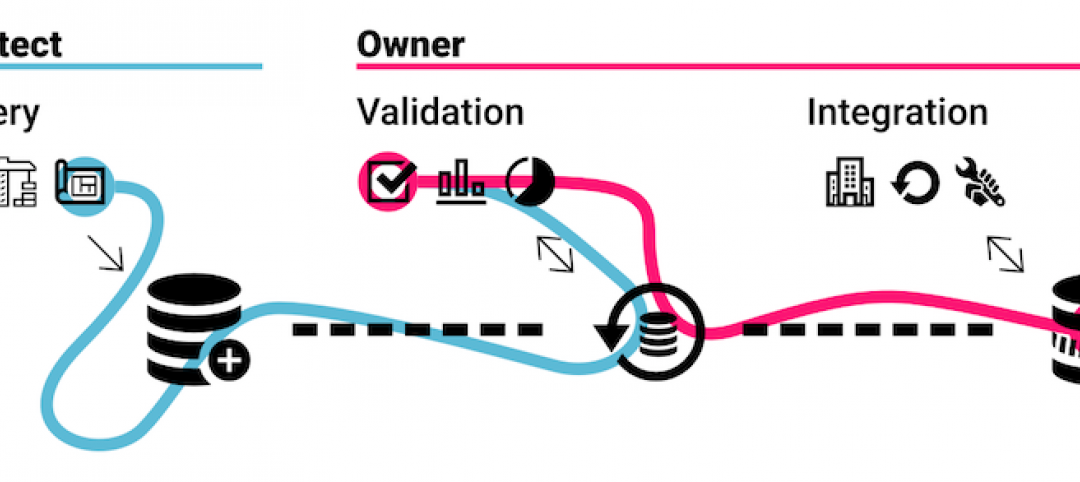Take a few minutes to think about the people you work with and how they approach solving problems on projects. Do they strive to use evidence in support of their solutions? Can they draw useful conclusions from the evidence? Are they willing to be challenged by new evidence? Can they synthesize their evidence so clients can easily understand the solutions?
All too often, the narrative of what it takes to be ‘data-driven’ focuses on methods for collecting, synthesizing, and visualizing data. Many of our clients are often keen to know where they can get access to the data they want. Or what tools they should purchase to create the slickest looking dashboards.
The most overlooked question is who? I can’t stress it enough: the primary factor contributing to a successful data-driven business is the ‘data literacy’ of your team. Data literacy refers to the know-how associated not only with the collecting but more importantly the interpreting of data to arrive at useful conclusions. Technologies can certainly enhance a person’s capacity to consume or see the data, but data literacy does not depend on having the latest dashboarding tools or the parametric technologies.
Data literacy comes about from a much deeper investment directed towards growing knowledge and expertise. Skill sets in statistical analysis or the ability to prepare meaningful visual representations of data are practical examples of being literate in data. Cultivating data literacy can also be a much higher barrier to overcome due to entrenched corporate politics, competing business interests and resistance from decision-makers to implement analytical recommendations that challenge the status quo. In short: changing people is harder than purchasing new tools.
To further highlight the importance of data literacy, consider the following two companies:
- The first company has invested in acquiring a top-of-the-line enterprise resource system and has migrated their building portfolio to a new sophisticated database. The system can produce detailed reports and dashboards conveying key performance metrics. However, project managers and staff are generally unfamiliar with manipulating data tables and possess very little experience in drawing conclusions from data visualizations.
- The second company tracks their project data in a far less sophisticated series of disconnected spreadsheets. Reports and dashboards are not automated. However, project managers and staff understand how to collect and manipulate tabular data and are comfortable producing graphs and drawing conclusions from them. Moreover, they understand the limits of their data and can identify when the data they are using might be missing critical information or might be misleading.
The first company may have the data infrastructure, but the second company has the ‘data literate’ staff. What would be the differentiator be if these two companies ended up competing for the same building project? Which company would you trust more? Absent all other factors, I would place my bet on the second company. Every time. And with clients today becoming more sophisticated in their own use of data to inform critical business decisions, they are increasingly attuned to companies who can speak the same language (and not just own the software!)
In my experience, a powerful data infrastructure does very little to enhance teams that do not possess basic knowledge in the medium and method of data manipulation and analysis. Meanwhile a data literate team is going to be equipped with the knowledge to make use of even limited data. And the trend I often observe is that data literate teams will grow more technologically savvy over time to further enhance their capacity to deliver data-driven solutions.
The data literacy of teams is essential for a business to realize the benefits of a data-driven workflow. How can businesses grow their data literacy?
Invest in Knowledge Sharing
Data literacy does not come about purely through training, but rather through continued engagement between staff. While a workshop can instill an initial foundation of knowledge to build from, I have observed successes where staff are empowered – and encouraged – to teach each other about focused data-related workflows that are immediately applicable to their work. In these instances, teams develop and implement methods to capture and make available new learning resources as they become available.
In one of my recent conversations with a design company, a staff member noted that they would sometimes hold workshops on focused topics but that attendance was often low because of conflicting project deadlines. This was creating frustration among staff who felt they were ‘missing out’ and the skillsets were not traveling outside a limited audience. I encouraged them to do something very simple: record everything. While this is not a direct replacement for ‘live’ interaction, it can provide a means for knowledge to travel to a broader audience. Additionally, the availability of these assets can help bring new members of the team up to speed more quickly.
Set Criteria for New Hires
While we’re on the subject of new teammates, another area that I find to be overlooked when growing a business’s ‘data literacy’ is in the recruiting and hiring process. A company that is serious about elevating their capability to deliver solutions with data will need to start evaluating new team candidates with consideration to these capabilities. In the building industry, we are used to looking for candidates with certain levels of experience in the known quantities of design, production, and construction.
Consideration for data literacy is not something I see very often in job requisitions. I often recommend that companies take a close look at what they are asking for:
- Are candidates expected to be able to collect and manipulate data in their job? The requisition should be specific about what data is relevant to the company.
- Are candidates expected to be able to produce data visualizations to support decisions? Ideally, their portfolio should provide tangible examples.
- Do candidates possess experience in using specific tools that highlight their skills in leveraging data in their work? Ask the candidate how they use these tools to support their process and decision making.
Set Priorities for Data Use
Teams need a ‘north star’ to guide their efforts. This remains true of a team that aspires to be data-driven. A point I often return to in my articles is that businesses need to clearly position new capabilities relative to the values of the company. Value might be defined in terms of key performance indicators affecting the bottom line or may be set in the context of a broader vision for how the company hopes to win new business.
Irrespective of the specific motivations, a data literate team needs to have a clear understanding of the priorities of the company or project as this will guide how they continue to grow their abilities. From this foundation, a team can continue to grow their data literacy, evaluate possibilities, and make decisions for positive outcomes.
More from Author
Proving Ground | Apr 14, 2021
Business intelligence: 5 drivers for adoption in architecture and construction
This article will explore some of the drivers for how BI is finding successful adoption among architects, engineers, contractors, and owners.
Proving Ground | Oct 8, 2020
4 challenges of realizing BIM's value for an owner
In recent years, we have found our consulting practice engaging more and more with owners that are questioning the value of BIM and how they can make use of potentially data-rich BIM assets.
Proving Ground | Mar 24, 2019
5 ways designers and builders can use business intelligence with data they already have
Tricky construction budgets, large project teams, and unique designs needing extensive coordination are all problems increasingly being handled with new software tools and data.
Proving Ground | Aug 21, 2018
Five habits that are keeping your digital strategy from working
Strategies are always created with the best of intentions for improving business, the effort involved in executing the strategy – especially ones involving disruptive digital capabilities – is greatly underestimated.
Proving Ground | Dec 12, 2017
Reflecting on the future of work
'I believe in the potential for new technology to positively impact the quality of the built environment with immense speed and great efficiency,' writes Proving Ground's Nathan Miller.
Proving Ground | Oct 6, 2017
How professional bias can sabotage industry transformation
Professional bias can take the form of change-resistant thinking that can keep transformational or innovative ambitions at bay. Tech consultant Nate Miller presents three kinds of bias that often emerge when a professional is confronted with new technology.
Proving Ground | Feb 16, 2017
Positioning computational designers in your business: 4 things to consider
There appears to be very little industry consensus as to what a ‘computational design’ position actually means in a business setting.
Proving Ground | May 9, 2016
3 things to consider for computation in the business of design
In creating a roadmap for computation, Proving Ground's Nathan Miller likes to consider investing in the right people, incorporating a range of skillsets, and defining the business value.
Proving Ground | Apr 15, 2016
Should architects learn to code?
Even if learning to code does not personally interest you, the growing demand for having these capabilities in an architectural business cannot be overlooked, writes computational design expert Nathan Miller.














